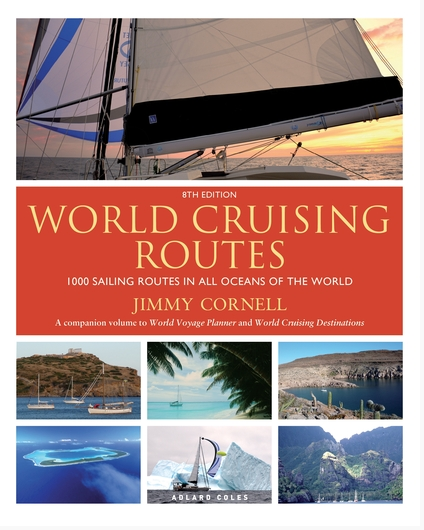The latest in a line of editions that began in 1987 sees Jimmy rusing in his introduction on how he made a successful transit of the North West passage in 2015 which he attributes to global warming and the loss of arctic ice. “few sailors would disagree that globaly weather conditions appear to be undergoing a radical change… as far as we sailors are concerned climate change is happening, and whether it is the result of human activity or a natural phenomenon, is irrelevant.”
It’s the wind as much as the current that has always determined a sailor’s best route from one point to another and, in one global tome of information, this book aims to provide the requisite knowledge to allow a sailor to plan his passage, from beginning to end, using the book for seasonal offshore weather, an outline description of the route; danger areas, and recommended ports of entry. It’s a bit like sitting in the sea bar and getting the information from an old salt who knows the way well; “the best time to cross the Bay of Bisc’y? Go in early summer – between May and July say when the weather is often settled. Late summer it’s gales and some of the most violent storms have been recorded from the middle of August to the end of September…” This gives the advice more of an accent than Jimmy’s measured tones but as you thumb through the pages you realise what an incredible compendium it is, with each route given a table – for:
Best time, Tropical Storms, Charts, World Voyage Planner reference, Cruising Guides, and Waypoints for different courses.
And then there’s typically half a page or (often) more of text with advice and on what to expect – and of course for this edition there’s quite a lot on the Northwest passage in the section of High Latitude Routes in the North Atlantic.
The book would be indispensable to world girdlers, but we’ve been enjoying it just to read up on some of the far away places… and dream – inspired by JC’s great description of the route and seamanlike advice. DH
Adlard Coles, 2018, 616pp, Hardback, £60


